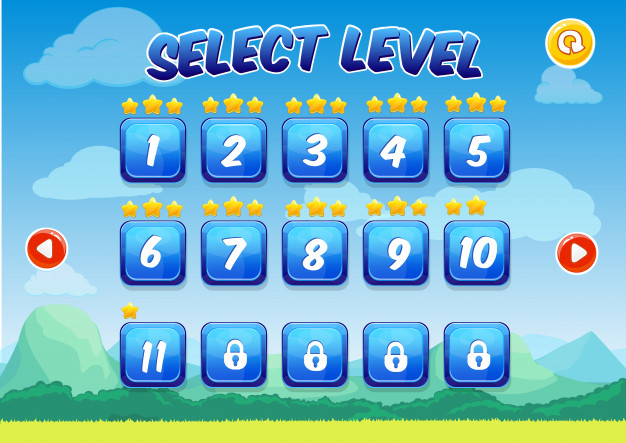Measuring LTV is one thing, and finding ways to increase it for your mobile game is another. Our main focus is to help you optimize your game for the best performance, so let’s get to some of the best practices that will surely improve lifetime value of your game’s users. There are some things you can do about the game design and mechanics, as well as others that are related to proper tracking.
Written 23/9/2022 by Admin.
After understanding basic information about Lifetime Value in Part 1, we will move to a very important subject, some techniques you can use to improve LTV for your game.
Excited? Okay. Let’s go for it.
Measuring LTV is one thing, and finding ways to increase it for your mobile game is another. Our main focus is to help you optimize your game for the best performance, so let’s get to some of the best practices that will surely improve lifetime value of your game’s users. There are some things you can do about the game design and mechanics, as well as others that are related to proper tracking.
Let’s begin with things you can do in-game.
When new users launch your game, they expect a simple starting experience. This is something that you should test while your game is still in the beta phase – try out different onboarding processes to see what works best for your game.
Keep the required steps before they can start playing to a minimum. For example, if you want the users to sign up or log in – make sure they can do it with just a click, by connecting to their social media accounts (Facebook, Google). Remember that what people want from a game is an instant experience.

When you finally get the users to install and play your game, the next challenge is keeping them engaged. This is also something you should do while your game is in the beta phase.
The secret to keeping the players engaged is making the game both challenging and entertaining. The key is finding the right fun-challenge ratio.
That can be done by experimenting with different cohort groups. For example, you can create different versions of the game: a version more difficult than the primary one, and an easier version. Separate these versions and observe how different cohorts react to them.
Testing in-game features can help you discover the golden setting for your game. For example, you might discover at which levels are the users engaged and more likely to spend and why is that so.
If this is possible for your game type, enrich your game with different in-game events. You can base them on seasons, holidays, or whatever you think your audience might like. These kinds of features are proven to have a positive impact on revenue and retention. Consequently, they will do the same for a game’s user LTVs.
For example, a sports mobile game can focus on major sports tournaments. Almost every game genre can do something different around Christmas time – organize special competitions, introduce new skins, or hand out special rewards.
Of course, this is not something you want to do last minute. You can create a yearly timeline of events that will take place in your game.
These are some of the things you can do to improve user LTV inside the game itself. Now let’s get to what you can do in terms of tracking and marketing.

One of the most important steps for improving your user LTV is segmenting your players.
After doing so, you will be able to better understand the relationship between their characteristics and in-game behavior.
You will notice how different groups behave differently and how you can use this information to meet their needs.
You can segment the users by their:

Once you’ve segmented your players, you can start creating different offers for different players.
Your players all have different playing styles, engagement, and spending habits.
Every user segment is more or less willing to spend money on your in-app purchase offers. Besides that, some of them respond better to IAPs, while others prefer ads.
The rules for creating special offers are simple.
They should appear at the right moment in the players’ journeys and bring good value for money.
When it comes to special offers and LTVs, one offer makes the biggest difference – the players’ first purchase.
This is usually some kind of “starter bundle” or “starter pack”. You need to tweak and adapt this offer to fit all of your user segments.
Once you get your users to make their first purchase, this should decrease churn rates and boost player LTVs.
The most common way of re-engaging users is by using push notifications. When sending out push notifications, don’t forget to segment the users by their behavioral data to ensure maximum personalization. Equally important, they have to include valuable content.
For example, you can provide the players with:
When using push notifications, be careful. You want to attract the users that already installed the game, but not annoy them to the point where they decide to uninstall it. Keep in mind that there is a fine line between the two. A good practice to determine push notification frequency is to track user activity. For example, if they launch the game once a day, send one notification, if they launch it three times, send three, etc.
Wondering how in-app advertising affects customer lifetime value? According to Ironsource, rewarded video ads can significantly increase user LTV.
This comes as no surprise since they are known to boost engagement, ARPDAU, and user retention rates, all of which affect lifetime value. To make things even better, rewarded video ads cost 86% less than interstitial video ads (Mobile Marketer).
It is common that some users don’t feel ready to pay when they start playing a game.
For this reason, it’s a great idea to introduce rewarded video ads relatively early. Especially if your game falls into the casual category. According to Appodeal, if users engage with rewarded video ads during their FTUE, they are more likely to spend money afterward. More precisely, five times more likely!
It’s important to give players a reward valuable enough to motivate them to watch the ad. Depending on the game type, you can offer them free coins, extra lives, or the unlocking of special features in return for watching an ad.
Giving them a peek into the content they would usually have to pay for might encourage their future purchases. In the long run, it can also boost their loyalty.

You can encourage your players to share their gaming experiences on social media. For example, after accomplishing something big in the game, integrate a share button. Features like this contribute to the virality factor of your game’s lifetime value.
What you can do outside the game is to create an engaged gaming community for your game across social media channels. The ultimate goal of your game’s social media marketing should be to encourage gamers to share their experiences, challenges, and goals.
There are players that won’t make any in-game purchases or even click on in-game ads, but will still drive game engagement. A common example of this are players in MOBA (massive online battle arena) games.
How so?
Sometimes, users that play frequently and have long play sessions can be equally important as paying users. If you have a MOBA or a similar game, you should keep this in mind and attribute this properly when calculating LTV.
We hope we’ve given you enough reasons to track your mobile games’ customer lifetime value.
To put things in perspective, LTV helps you better understand your players, and consequently how you can use those insights to maximize your game’s profits.
If your competitors are only tracking CPI, measuring LTV can give you a competitive advantage. Therefore, make sure to take a look at the genre benchmarks and use the techniques you can apply for getting the most out of your mobile game.